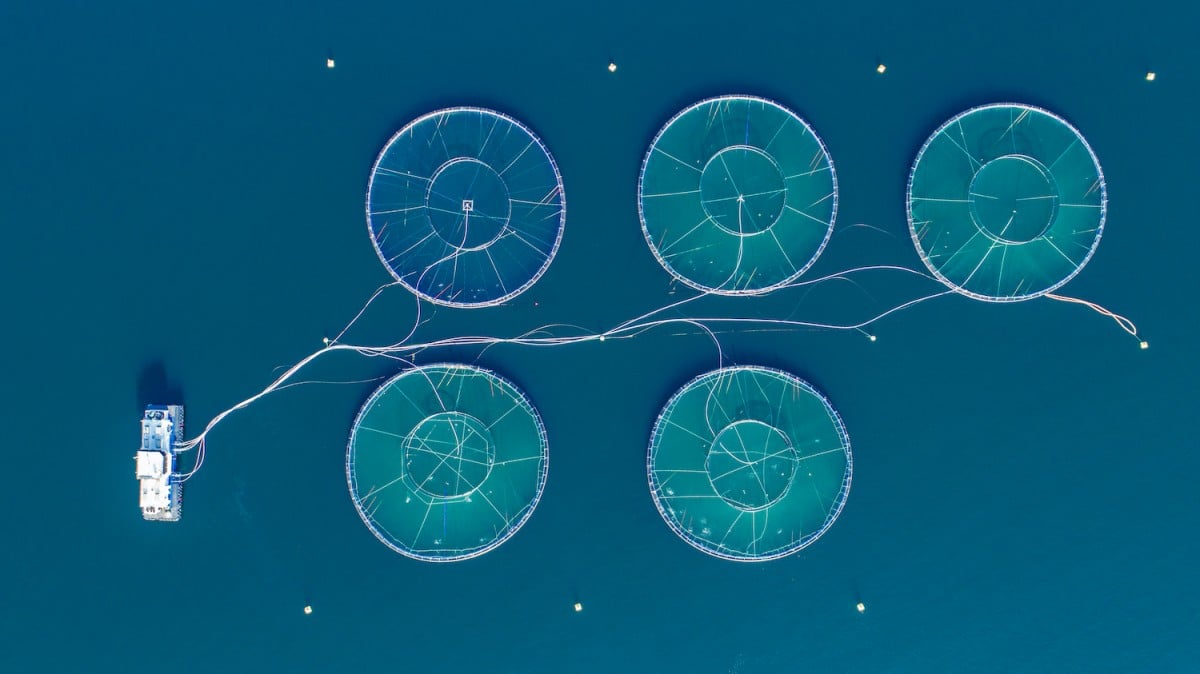White House calls for investment in U.S. seafood. It should add alternatives to the mix

Last month, the U.S. president released an executive order which, among other things, allows for the expansion of offshore finfish aquaculture activities beyond U.S. waters in order to “create and sustain American jobs, put safe and healthy food on American tables, and contribute to the American economy.” The order reasons that, since approximately 85 percent of seafood in the United States is currently imported, growing the American seafood industry would create jobs, enhance rural prosperity, and strengthen food security. However, simply expanding the aquatic reach of our current production methods is insufficient. To meet these critical goals, the U.S. federal and state governments need to support new seafood production methods, particularly plant-based and cultivated seafood.
Aquaculture alone is insufficient.
In contrast with wild-caught fish, aquaculture (sometimes referred to as farmed fishing) involves breeding, rearing, and harvesting seafood under controlled conditions and currently provides about 47 percent of global fish production. However, as incomes rise and population increases around the world, the United Nations projects an increase in demand for seafood of more than 45 million tons between the mid-2010s and early-2020s. In the short term, we could see as much as a 30 percent increase in demand in the coming decade. Meanwhile, warming ocean temperatures will limit expansion opportunities for aquaculture. The industry’s growth is only anticipated to keep pace with increased demand for 17 countries, while around 170 countries will be left with substantial unmet demand.
Increasing aquaculture production is not only insufficient—it could actually compromise food security. The aquaculture industry is still heavily dependent upon wild-caught biomass to supply its feed. A 2019 report found that fishmeal and fish oil supply chains are leading to the collapse of fish stocks. (This is because demand for aquaculture feed has already led to the collapse of common feed species and is now driving fishing for species not historically used for these purposes and the use of fishing techniques that catch non-target species.) Over 800 million people are at risk of malnutrition if fish populations continue to decline.
Alternative seafood offers a more sustainable, safe, and economically beneficial solution.
By contrast, the government could invest in plant-based and cultivated seafood to meet the goals laid out in the executive order while simultaneously avoiding or mitigating the problems associated with conventional fishing methods. Plant-based seafood (which is already available commercially) uses plant-derived ingredients to replicate the flavor and texture of seafood, while cultivated seafood (which is rapidly nearing market) is produced by cultivating cells from marine animals.
GFI has previously argued that public investment in alternative protein research would stimulate economic growth, create jobs, and enhance food security. Like other plant-based and cultivated meat production, alternative seafood manufacturing facilities can be placed near ingredients needed for production, near distribution chains, or in rural communities that need revitalizing, and will employ Americans across the country with a wide variety of skill sets. Additionally, alternative seafood products can be generated in direct response to demand, thereby minimizing waste and inefficiency in the supply chain.
In addition to its economic benefits, alternative seafood will contribute to healthier oceans and a safe and environmentally sustainable seafood supply. Increasing plant-based and cultivated seafood production would relieve pressure on fisheries, allowing coastal fish populations to replenish. And not only can alternative seafood production happen away from sensitive marine ecosystems, thereby reducing ocean pollution and bycatch, but plant-based and cultivated seafood also do not require the inputs needed to produce scales, bones, and other body parts that do not typically end up on the consumer’s plate. Finally, alternative seafood can provide the same or similar nutritional benefits as farmed fish without the health and safety concerns that arise from antibiotic use or heavy metal and microplastic contamination.
This pandemic has underscored the need for a safe, efficient, resilient seafood supply and a robust American seafood industry. While we appreciate the U.S. government’s concerns, merely expanding our current production methods will only exacerbate existing issues. GFI’s Sustainable Seafood Initiative aims to show that alternative seafood has the potential to make America a leader in seafood production with vast positive impacts for the economy, workers, human health, and ocean sustainability. We encourage other organizations to join us in supporting public investment in this critical area.
Want to learn more about opportunities in alternative seafood? Sign up for our upcoming webinar. And check out GFI’s work to support alternative seafood.

